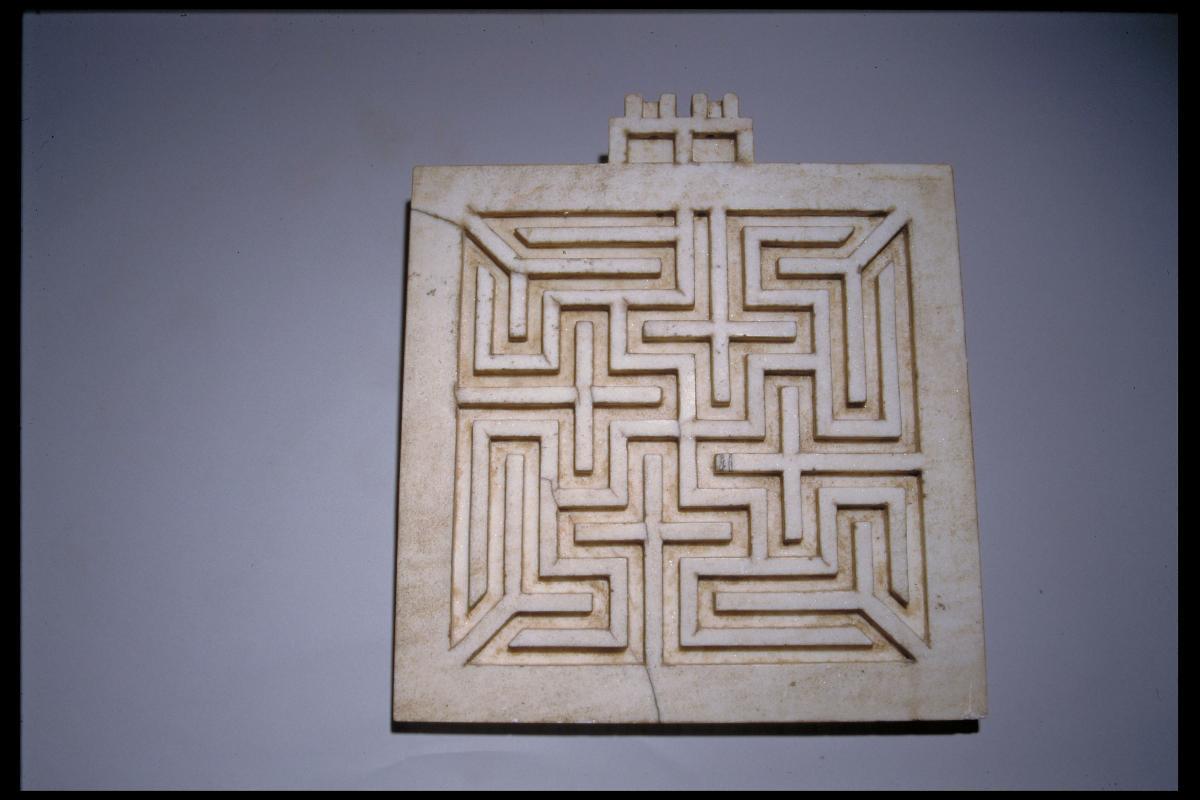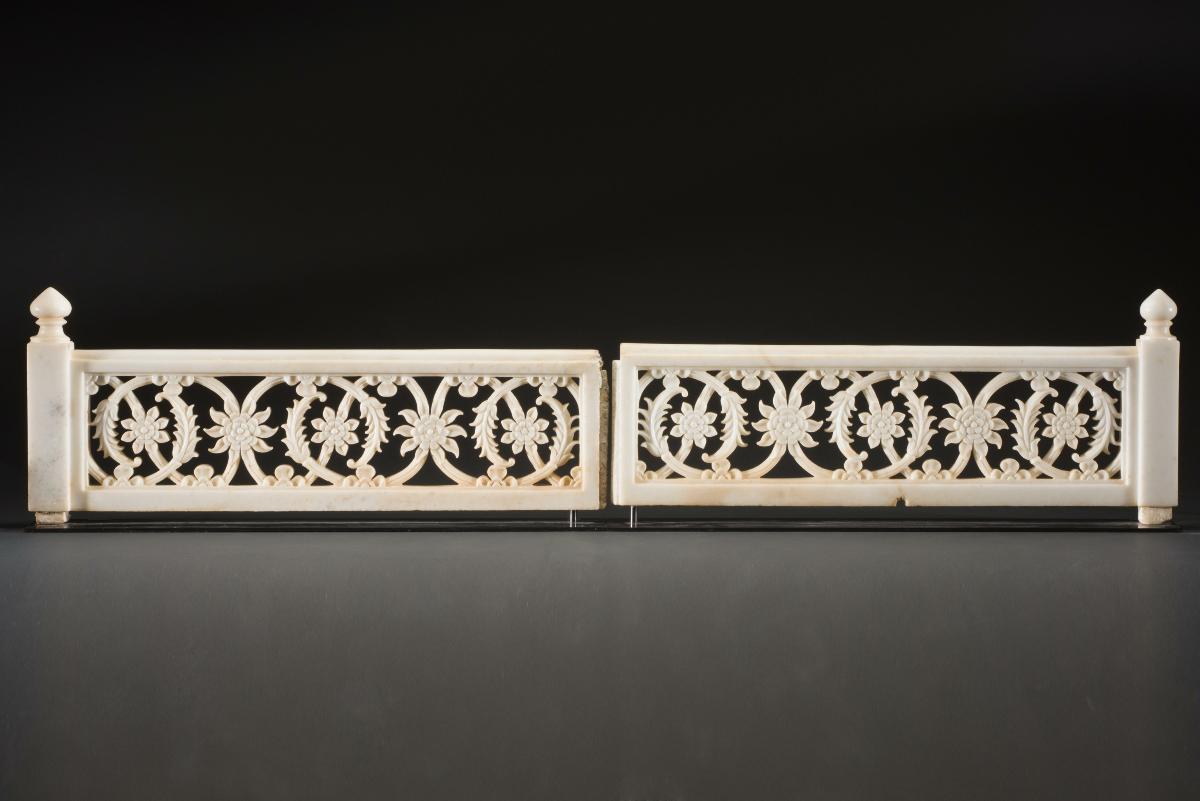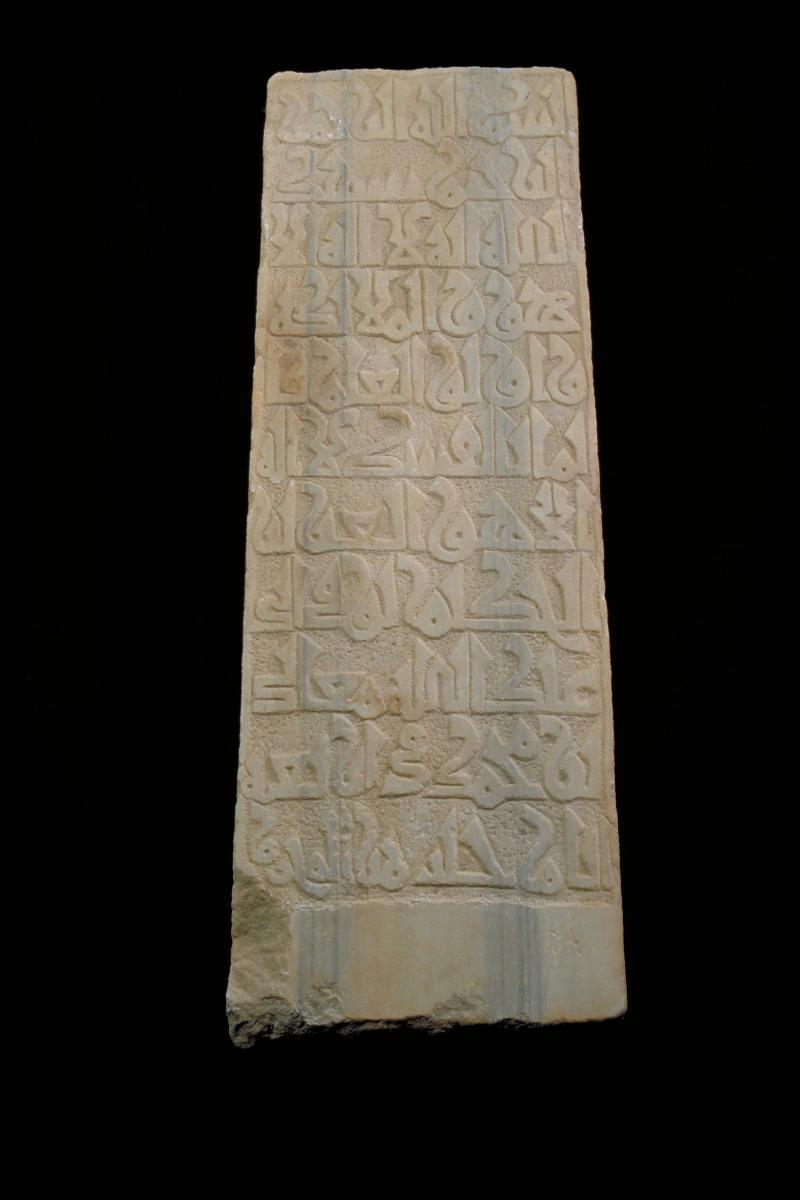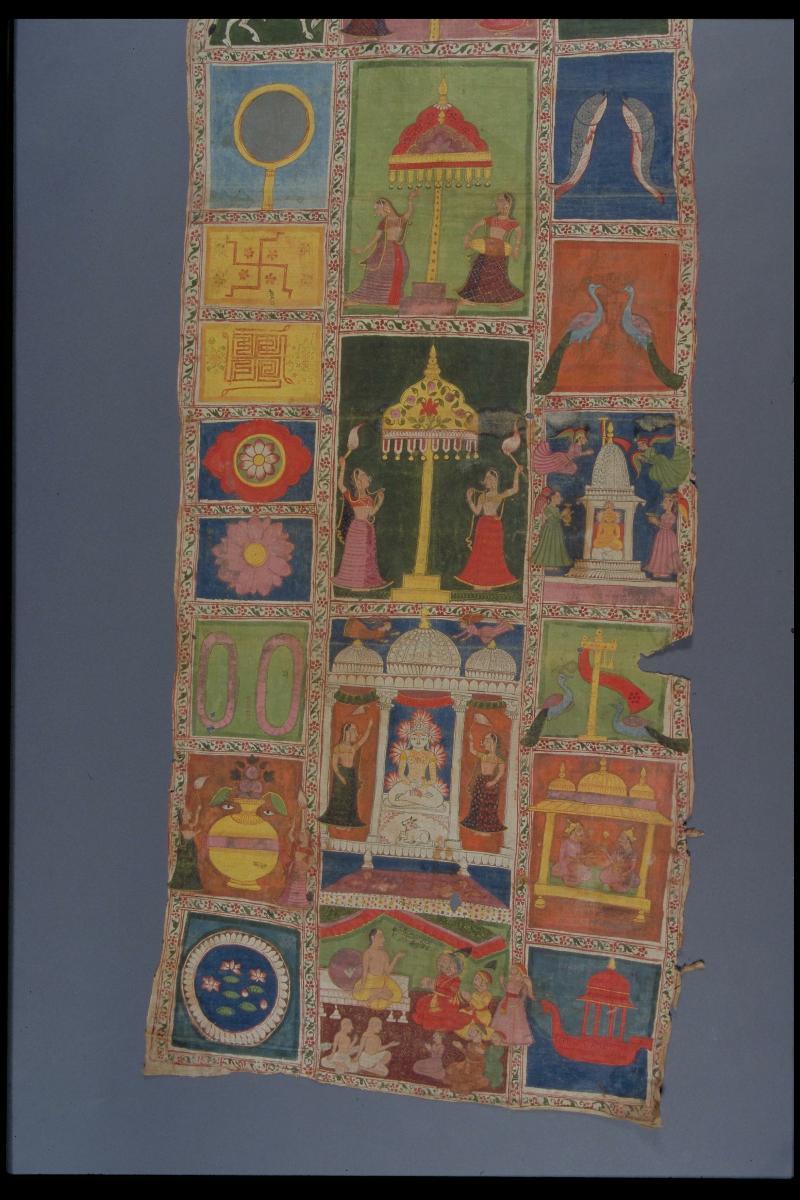The continuous lines of this akshaya-swastika (an endless labyrinthine motif) form this maze, carved from a piece of flat marble. It is meant for a water feature where, at the end of a channel, water enters through one spout, flows through the maze and gushes out of another. This maze possibly comes from a Rajput palace or a Jain temple in western India where it became popular in the 18th century.















